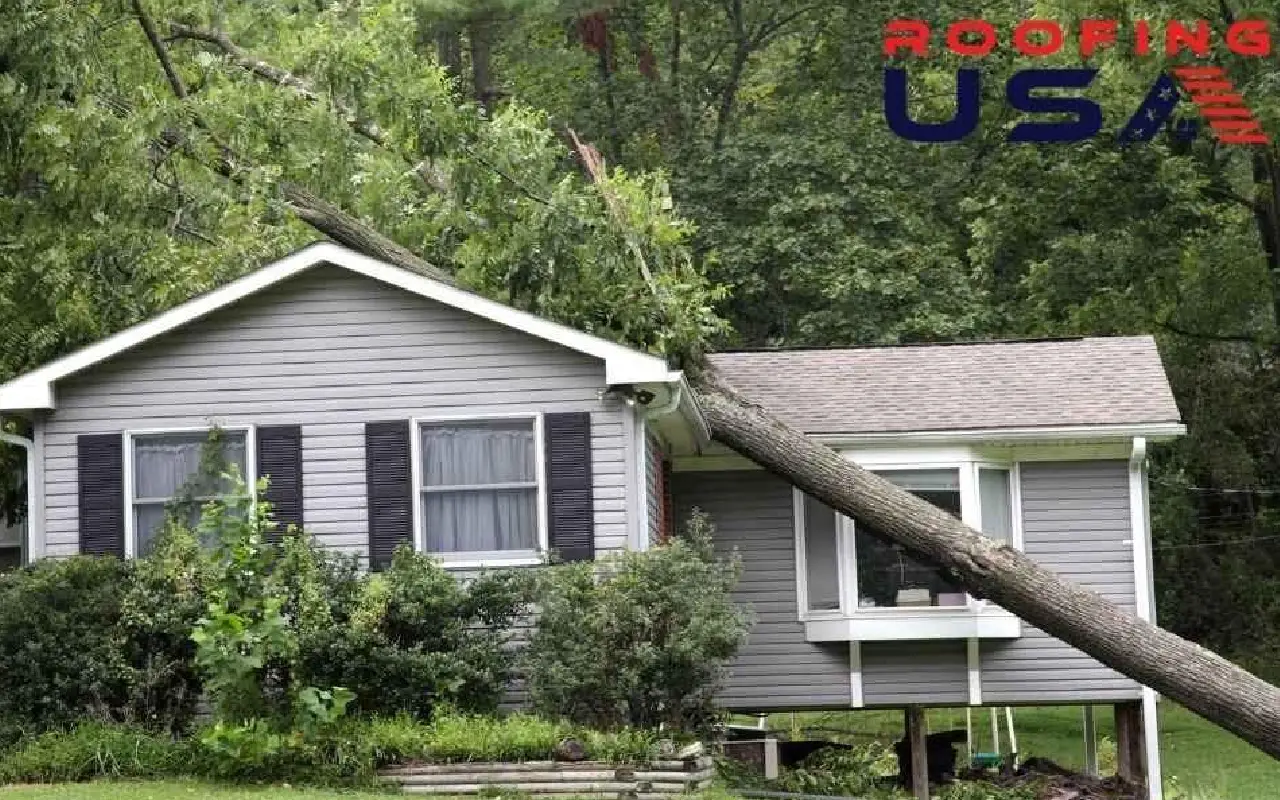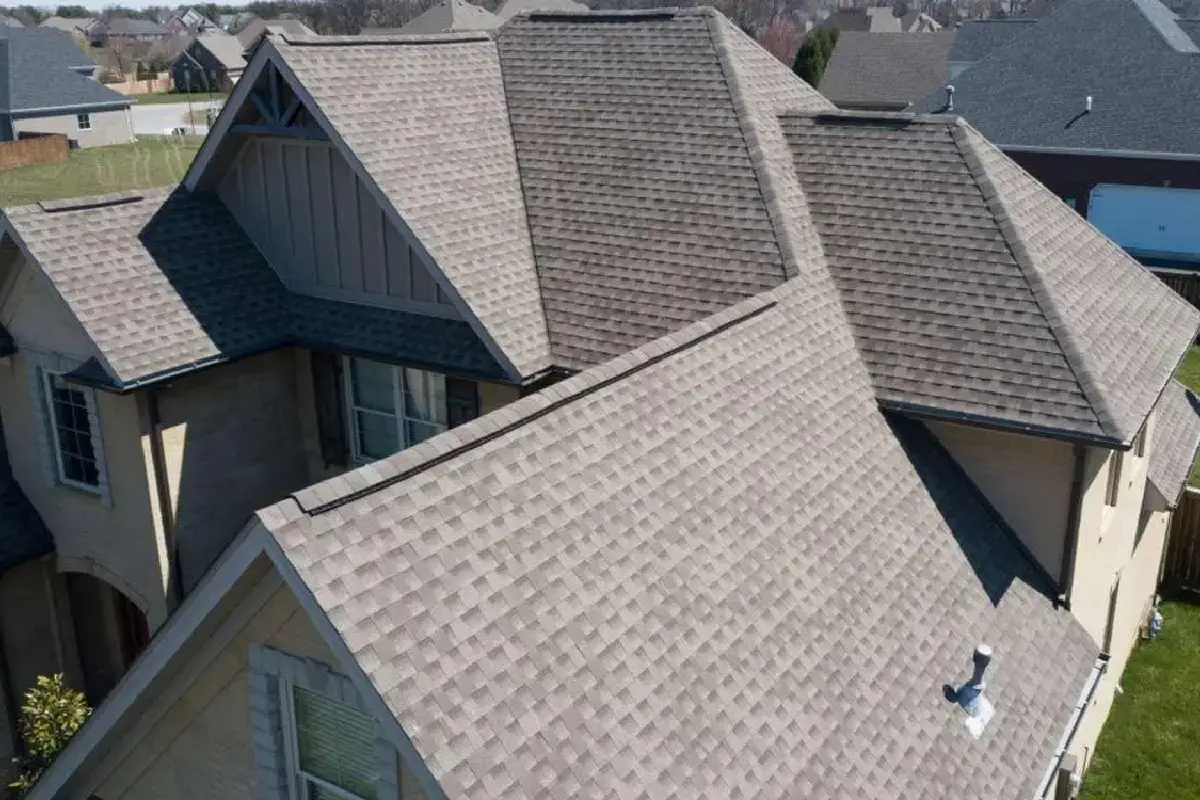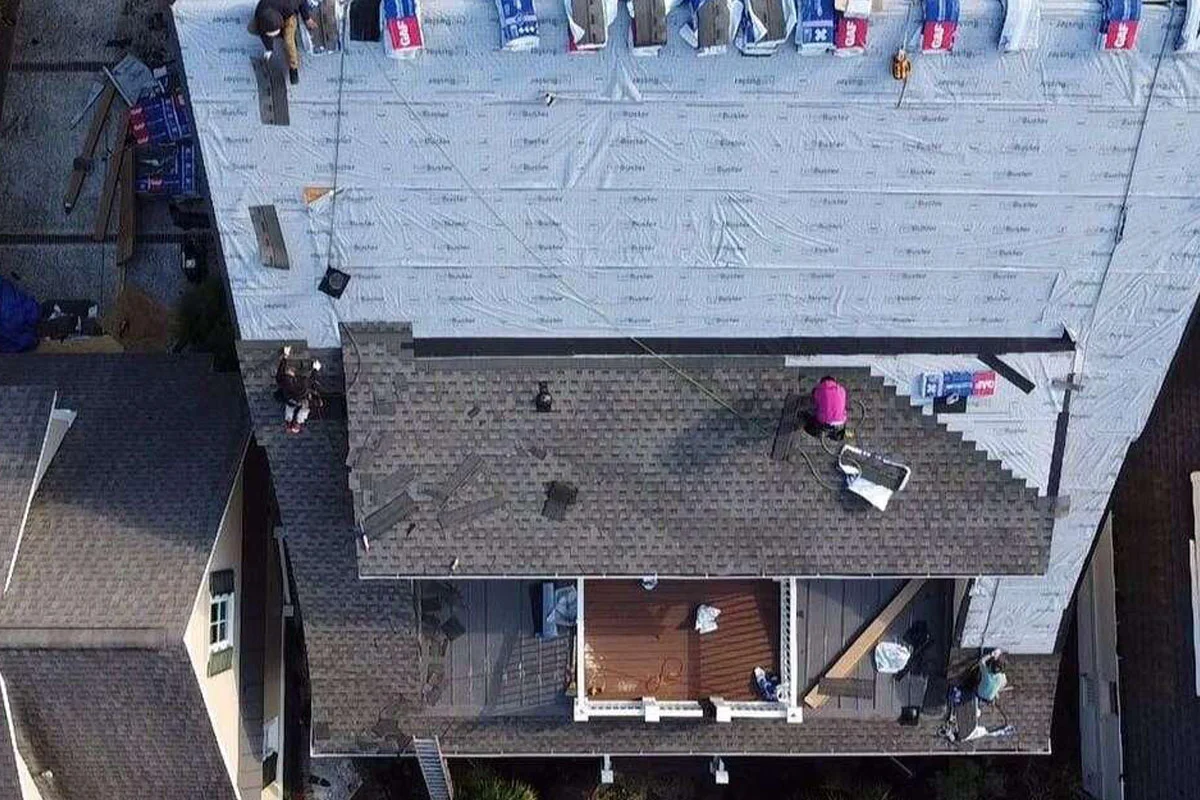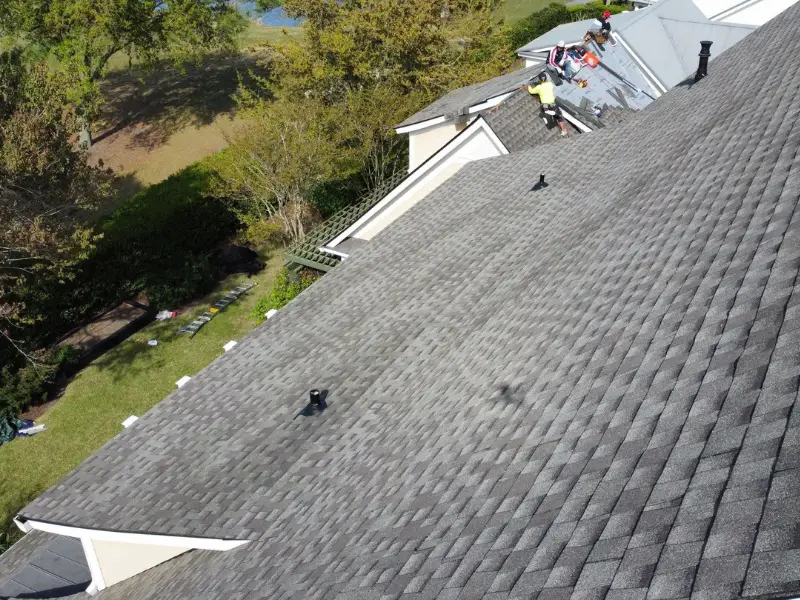Commercial roofs are vital for protecting the structure from the elements. They shield against rain, snow, and harsh sunlight, as well as provide insulation and structural stability. Additionally, roofing membranes offer extra protection against water infiltration and potential damage.
Commercial building owners and managers know the value of investing in durable roofing materials. A well-designed and properly installed roof can prevent costly repairs and replacements. That’s where single-ply roof membranes come in.
In this article, the Roofing USA commercial experts talk about single-ply roofing membranes, including their benefits, how to choose the right type, and essential installation and maintenance tips. By the end, you’ll understand why they’re a top choice for commercial buildings.
What are Single-Ply Roofing Membranes?
When protecting commercial buildings from the elements, single-ply roofing membranes are a popular choice. These innovative materials offer a durable and reliable solution for ensuring the integrity and longevity of commercial roofs.In simple terms, single-ply roofing membranes are synthetic sheets or membranes used as a protective layer on commercial roofs. They provide a barrier against water, UV rays, extreme temperatures, and other environmental factors that can damage the roof structure. By creating a seamless and watertight seal, these membranes help to prevent leaks, extend the roof’s lifespan, and provide energy efficiency benefits.
Types of Single-Ply Roofing Membranes (EPDM, PVC, TPO)
There are several types of single-ply roofing membranes available in the market, each with unique properties and advantages. The most commonly used types are:
Similar Posts
- EPDM (Ethylene Propylene Diene Monomer): This membrane is made from synthetic rubber, known for its durability and weather resistance. It’s highly flexible, easily adapting to various roof shapes and sizes. EPDM membranes are long-lasting and commonly used in low-slope commercial roofing .
- PVC (Polyvinyl Chloride): PVC membranes are thermoplastic materials known for their strength, durability, and resistance to chemicals, fire, and UV radiation. They are highly reflective, reducing heat absorption and energy costs.
- TPO (Thermoplastic Olefin): TPO membranes are popular for commercial roofing due to their excellent performance and affordability. They’re made from polypropylene and ethylene-propylene rubber, providing strength, flexibility, and resistance to UV radiation. They’re also easy to install with excellent heat-welding capabilities.
Each type of single-ply membrane offers unique benefits. Consult a commercial roofing contractor like the experts here at Roofing USA to find the best option for your needs.
What Are the Benefits of Single-Ply Roofing Membranes?
Single-ply roofing membranes offer many benefits for commercial building protection, making them an excellent choice for savvy business owners and managers. With durability, longevity, energy efficiency, and cost-effectiveness, these high-performance roofing systems are increasingly popular in the industry.
Durability and Longevity
One of the advantages of single-ply roofing membranes is their exceptional durability and longevity. These membranes withstand harsh weather conditions, including intense heat, heavy rain, and strong winds. Their robust construction and resistance to UV radiation ensure that they can effectively protect the building for many years, providing peace of mind to commercial property owners.
Energy Efficiency
In today’s environmentally conscious world, energy efficiency is a top priority for commercial buildings. Single-ply roofing membranes contribute to energy savings by effectively reflecting sunlight and reducing heat transfer.
Energy-efficient roofing helps to maintain a comfortable indoor environment, reducing the need for excessive air conditioning and ultimately lowering energy costs. Some single-ply membranes can be combined with cool roof coatings to enhance energy efficiency.
Easy Installation and Maintenance
Commercial building owners and managers value time. Single-ply roofing membranes streamline installation with their lightweight and flexible nature, making them easier to handle and resulting in quicker project completion.
Moreover, these membranes need minimal maintenance, saving time and money in the long run. Routine inspections and upkeep are usually enough to keep the roof in great shape.
Cost-Effectiveness
A roofing system that provides long-term value is essential for commercial building owners. Single-ply roofing membranes offer a cost-effective solution. Their durability and low maintenance requirements translate into reduced repair and replacement costs.
Additionally, their energy-efficient properties can lead to significant savings on utility bills, making them a smart investment for businesses.

Considerations for Choosing Single-Ply Roofing Membranes
When selecting single-ply roofing membranes for your commercial building, there are several considerations that must be taken into account. Let’s look into each of these considerations in more detail.
Building Location and Climate
The location of your commercial building and the climate are instrumental in determining the most suitable single-ply roofing membrane. Different regions experience varying weather conditions, such as extreme heat, heavy rainfall, or high winds.
EPDM (Ethylene Propylene Diene Monomer), PVC (Polyvinyl Chloride), and TPO (Thermoplastic Olefin) are popular types of single-ply roofing membranes that offer exceptional performance in different climates.
EPDM is known for its excellent resistance to UV rays and is ideal for areas with high sun exposure. PVC, on the other hand, is highly durable and can withstand extreme temperatures, making it suitable for both hot and cold climates. TPO roofing systems have durability and energy efficiency, making them a popular choice in many regions.
Building Design and Structure
The design and structure of your commercial building also influence the choice of single-ply roofing membrane. Consider factors such as roof slope, load-bearing capacity, and architectural features.
For buildings with a low-slope or flat roof, EPDM roofing membranes offer excellent flexibility and durability. PVC membranes, with their inherent strength, are well-suited for buildings with higher load requirements. TPO membranes, with their weldable seams, provide superior protection against leaks and are suitable for a wide range of building designs.
Cost and Budget
Cost is a crucial factor in any roofing project, and it is essential to determine a budget that aligns with the specific needs of your commercial building. Single-ply roofing membranes offer a more cost-effective solution than other roofing systems, like modified bitumen or spray foam.
While EPDM membranes are generally more affordable, PVC and TPO membranes offer a balance between cost and performance. It is essential to consider the long-term value and durability of the chosen roofing membrane to make an informed decision that minimizes future maintenance and replacement costs.
Contractor Expertise
Choosing a reputable contractor is crucial for the proper installation and maintenance of your single-ply roofing membrane. Commercial roofing contractors specialize in installing and repairing various roofing systems, including single-ply membranes. Their expertise and industry knowledge contribute to the longevity and performance of your roof. When selecting a contractor, review their portfolio and seek references from previous clients. A commercial roofing company with a proven track record can provide the peace of mind you need for your project.
Installation and Maintenance Tips
After selecting the single-ply roofing membrane, it is essential to ensure proper installation and maintenance to maximize its performance. Here are some helpful tips to help you get the most out of this roofing system.
Pre-Installation Preparation
Before installing these roofing membranes on your commercial building, prepare properly. Preparation ensures a smooth installation process. One of the initial steps is to inspect the existing roof thoroughly for any underlying issues. Addressing and fixing damaged components is essential before proceeding with the installation.
Consider the compatibility of the single-ply roofing membrane with the existing roof structure. Different single-ply membranes (EPDM, PVC, and TPO) have varying installation requirements and may need specific adhesives or fasteners. Consulting a professional commercial roofing contractor specializing in single-ply systems can provide valuable guidance for a correct installation.
Proper Installation Techniques
To ensure the longevity and effectiveness of single-ply roofing membranes, it is crucial to follow proper installation techniques. Following these techniques involves attention to detail and precision throughout the process. The first step is to remove any debris, dirt, or loose materials. Roof cleaning will provide a clean and smooth base for the membrane installation.
Next, the membrane should be carefully positioned and aligned according to the manufacturer’s guidelines. Adhering the membrane securely to the roof surface is crucial to prevent water infiltration and ensure a watertight seal. Proper adhesives, fasteners, or heat-welding techniques, depending on the type of membrane being installed, are essential for a durable and long-lasting installation.
Hire a professional commercial roofing company, like Roofing USA, with experience installing single-ply membranes. Their expertise and knowledge of the specific installation techniques will ensure that your roof is installed correctly and in accordance with industry standards.
Common Questions About a Single-Ply Commercial Roofing System
As a commercial building owner, you may have questions regarding single-ply roofing membranes. This section will address some of the most common inquiries to help you make informed decisions about your roofing system.
How long do single-ply roofing membranes last?
One of the primary concerns when considering any roofing system is its lifespan. Single-ply roofing membranes are known for their durability and longevity, making them an excellent choice for commercial buildings. On average, these membranes can last up to 20 to 30 years, depending on various factors such as the type of membrane, maintenance, and environmental conditions.
EPDM (ethylene propylene diene monomer), PVC (polyvinyl chloride), and TPO (thermoplastic olefin) are the most commonly used types of single-ply roofing membranes. Each of these materials has its own unique properties and lifespan. EPDM membranes, for example, can last up to 25 to 30 years, while PVC and TPO membranes typically have a lifespan of 20 to 25 years.
It’s important to note that regular maintenance and inspections by qualified commercial roofing contractors are crucial in maximizing the lifespan of your roofing membrane. By identifying and addressing potential issues early on, you can extend the life of your roof and avoid costly repairs or premature replacement.
Can single-ply roofing membranes be repaired?
Yes, single-ply roofing membranes can be repaired in most cases. These membranes are easily repaired thanks to their flexibility and compatibility with various repair materials. Small punctures, tears, or localized damage can often be fixed by applying compatible adhesives, patches, or sealants. However, the feasibility of repairs depends on the extent and nature of the damage. If the damage is extensive or affects the structural integrity of the membrane, a commercial roof replacement may be necessary. To determine the best action, consult a professional roofing contractor specializing in these roofing systems.
Are there any environmental considerations with single-ply roofing membranes?
Environmental considerations have become increasingly important in the construction industry, and roofing systems are no exception. Single-ply roofing membranes offer several environmental benefits, making them an attractive choice for commercial buildings.
First, these membranes are often highly reflective, meaning they can reflect the sun’s heat away from the building. This can result in reduced cooling costs and increased energy efficiency, particularly when combined with cool roof coatings. Additionally, single-ply roofing membranes are often recyclable, making them a more sustainable option than other roofing materials. At the end of their lifespan, these membranes can be recycled and used for new products, reducing waste and environmental impact.
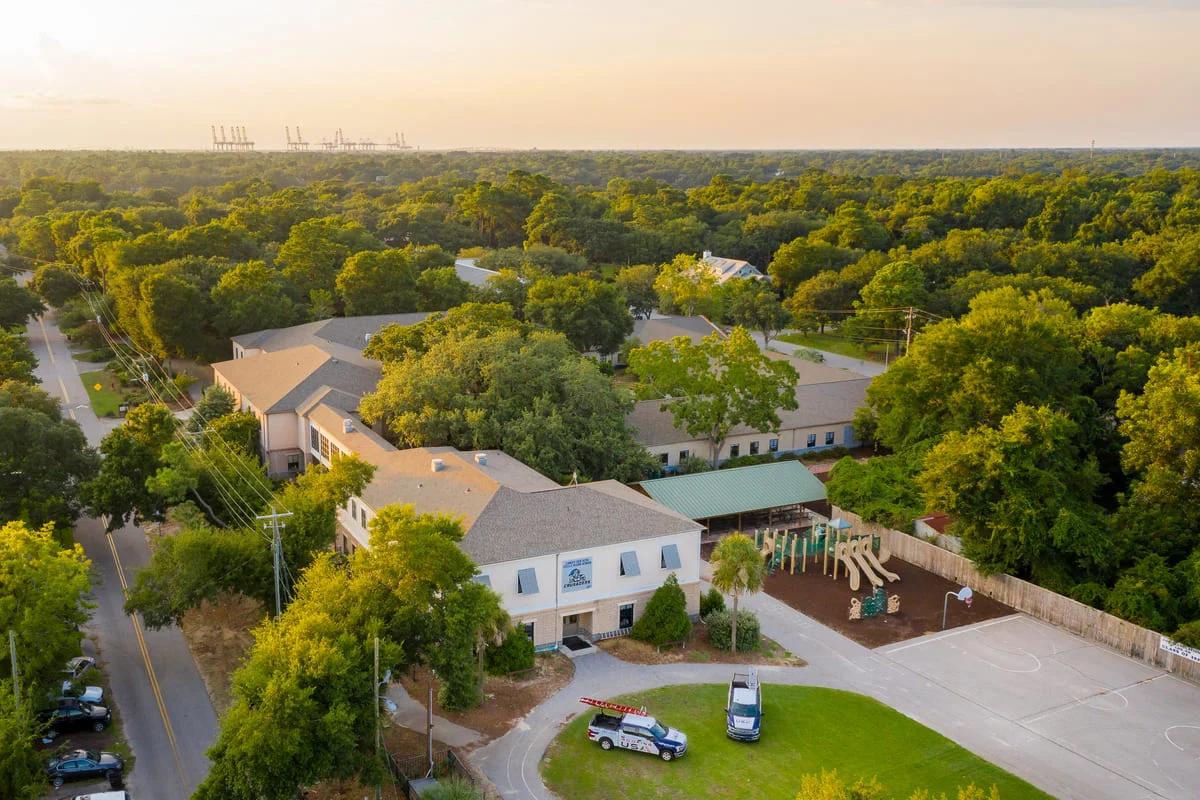
Protect Your Commercial Building With a Single-Ply Roof
Single-ply roofing membranes are a great choice for commercial building owners. They offer durable, energy-efficient protection against harsh weather conditions like UV rays, extreme temperatures, and heavy rainfall. With exceptional resistance to punctures and tears, they ensure long-lasting performance and minimize the risk of leaks.
When selecting roofing solutions, consider factors like climate, building requirements, and budget. Roofing USA in Charleston, SC, offers a wide range of options for commercial buildings tailored to their unique needs. Our expert team will guide you through the selection process, ensuring you find the perfect roofing solution for your project. In addition, Roofing USA offers a Commercial Roof Inspection for a limited time. Don’t miss out on this opportunity to have your commercial roof assessed by professionals.
Remember, investing in high-quality roofing solutions from Roofing USA not only protects your building but also provides peace of mind.
Get a Commercial Roof Inspection. Schedule Now!




